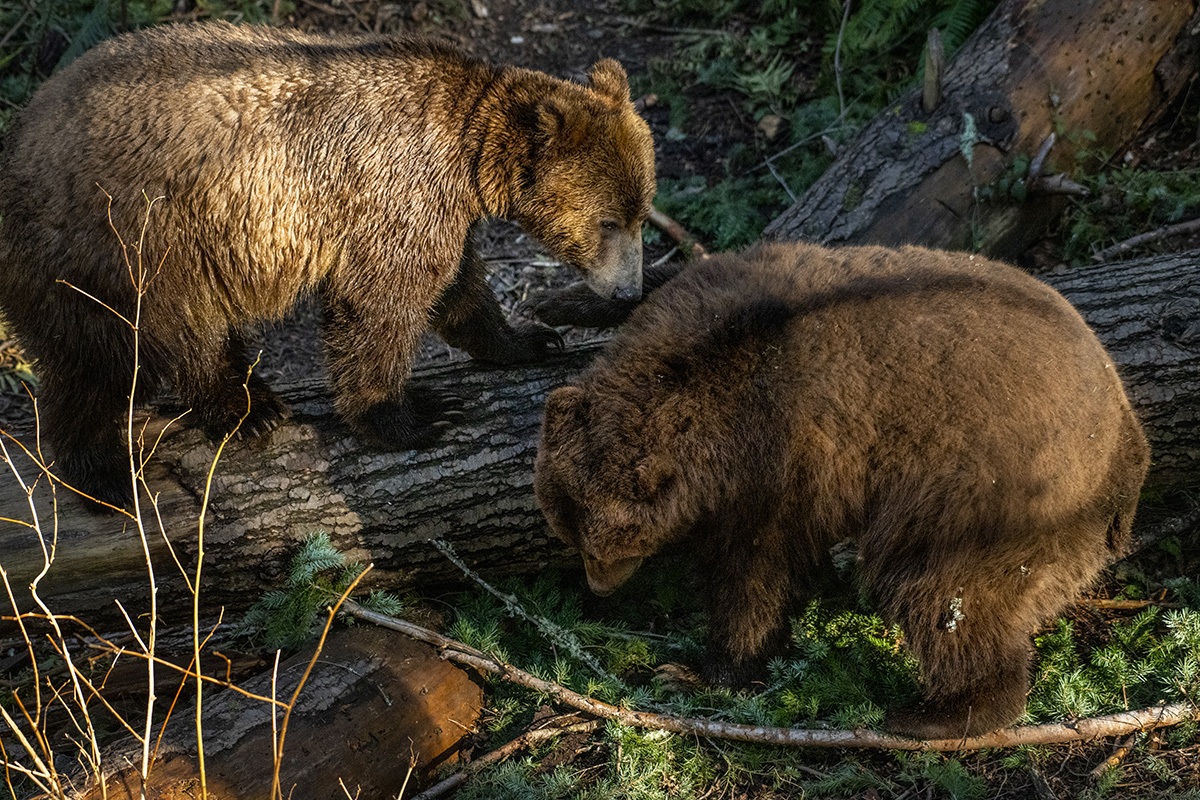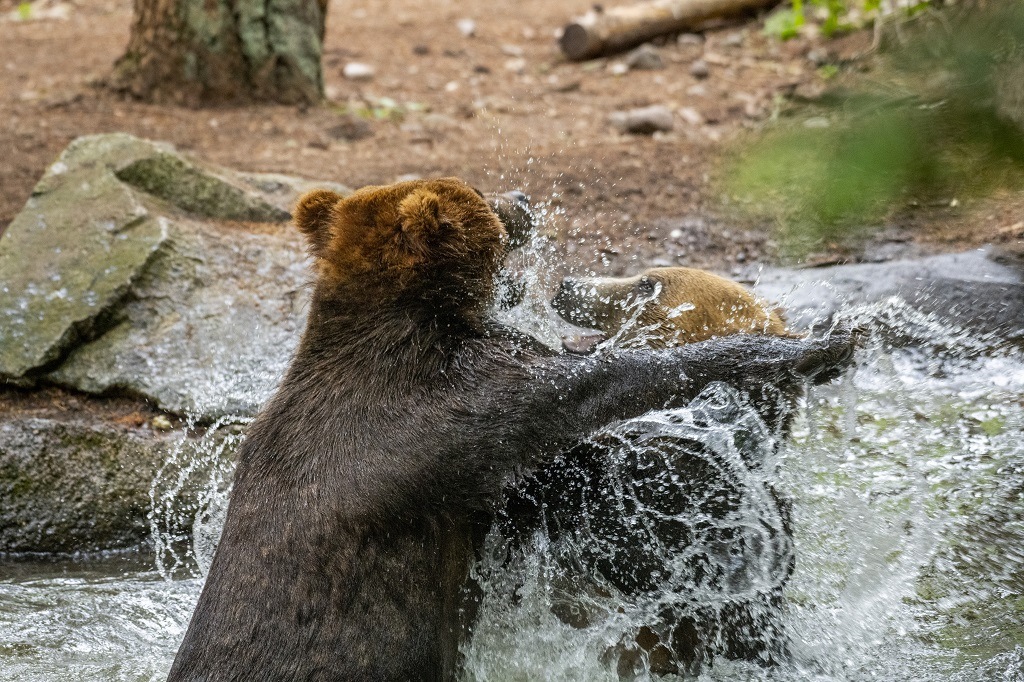Grizzly bear
Hawthorne’s chocolatey-brown, from Alaska. Huckleberry’s a little lighter, from Montana. Both were orphaned in the wild – and now they’re “brothers” here at Northwest Trek.
Come meet our grizzly bears!

Born in winter 2018, our grizzly bears were orphaned in the wild: Hawthorne in Alaska, Huckleberry in Montana. Neither would have survived without their mom. Cared for by local zoos, they then came to their new Northwest Trek home in August 2018.

Hawthorne and Huckleberry are ambassadors for their cousins in the wild. Northwest Trek supports grizzly bear conservation, especially in Washington.
|
Did you know?
Fur and muscle.
|
Grizzlies are one of the largest terrestrial predators in North America, with blond, brown or black fur and silver guard hairs that give them their common name. |
They have long curved front claws, a prominent shoulder hump made of muscle and a long snout. Full-grown, they're 6.5 feet long and around 3 feet high. |
|
Solitude, space
and plenty of food.
|
Grizzly bears live in remote areas of Montana, Wyoming, Idaho, Washington, southwest Canada and Alaska. They're endangered in Washington, with only a handful left. |
They eat a variety of food: large and small mammals, carrion, salmon, fruit, plants and insects, depending on what's in season. |
|
Babies
and cubs
|
Breeding in May-July, females give birth to a litter of 1-3 blind and helpless cubs, each weighing about a pound. |
A bear's most important senses are smell and hearing. Young cubs can climb trees, but adults get too big. |